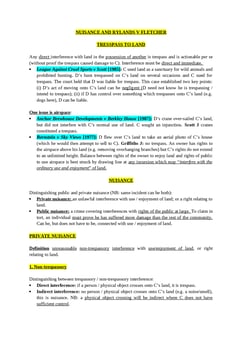Various Claimants v Catholic Child Welfare Society [2012] UKSC 56
Judgement for the case Various Claimants v Catholic Child Welfare Society
Table Of Contents
KEY POINTS
-
To establish vicarious liability, two stages need to be satisfied, namely:
It must be shown that the relationship between the member and the Institute was capable of giving rise to vicarious liability, and
There needs to be an examination of the connection that links the relationship between them to the member's wrongful act or omission.
-
The relationship between the Institute and the teaching brothers at the School exhibited all the essential elements of an employer-employee relationship.
The brothers taught at the School as directed by the Institute, aligned with the Institute's mission, and adhered to the Institute's rules.
Although their connection with the Institute was through vows rather than a contract and they transferred their earnings to the Institute, these factors did not significantly alter the nature of their relationship as employees.
FACTS
The Institute of the Brothers of the Christian Schools, founded in 1680, faced a legal question regarding its vicarious liability for alleged sexual and physical abuse of children by its members at St Williams, a residential institution for boys in need of care.
Although the Institute did not own the School, its members taught there, and a brother always acted as headmaster.
The abuse occurred between 1952 and 1992. The headmaster, Brother James, was expelled from the Institute in 1990 after being found guilty of systematic sexual abuse of boys.
Claims have been brought by 170 men who alleged they were subjected to abuse by Brother James and other brothers at the School.
COMMENTARY
The ruling underscored that the critical factor is the degree of control and integration between the wrongdoer and the entity sought to be held liable, rather than the specific label of the relationship.
This decision reinforces the concept of holding employers accountable for the actions of their employees when they act within the scope of their employment, providing an avenue of redress for victims of wrongdoing and ensuring that employers take responsibility for the conduct of their workforce.
For Further Study on Various Claimants v Catholic Child Welfare Society
Need instant answers? Our AI exam tutor is here to help.
Ask questions 🙋 Get answers 📔 It's simple 👁️👄👁️
Our AI is educated by the highest scoring students across all subjects and schools. Join hundreds of your peers today.
Get StartedSimilar Cases
Related Product Samples
These product samples contain the same concepts we cover in this case.
| Tort Law | Vicarious Liability Notes (4 pages) |
| Tort Law | Vicarious Liability Notes (17 pages) |

